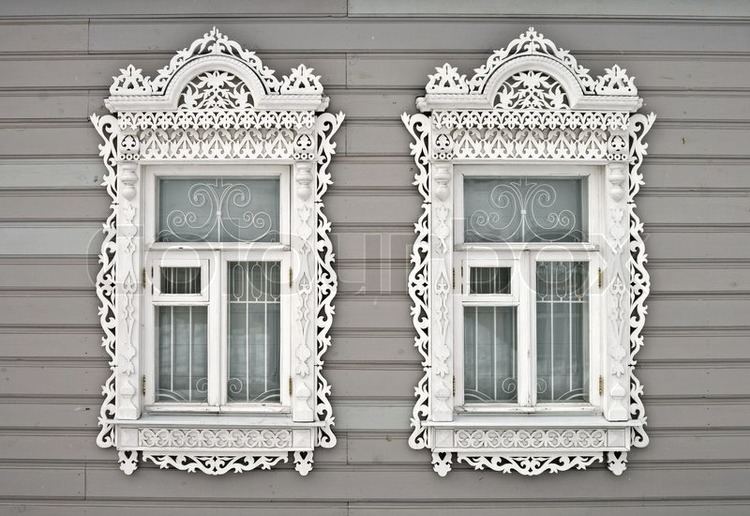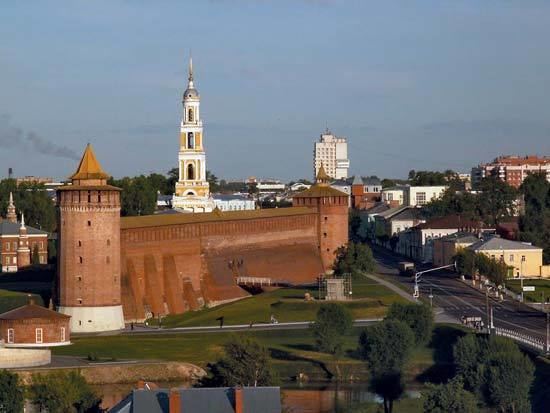Population 144,589 (2010) | Area 65.1 km² Founded 1177 | |
 | ||
Map of Kolomna
Kolomna (Russian: Колóмна; [kɐˈlomnə]) is an ancient city of Moscow Oblast, Russia, situated at the confluence of the Moskva and Oka Rivers, 114 kilometers (71 mi) (by rail) southeast of Moscow. Population: 144,589 (2010 Census); 150,129 (2002 Census); 161,881 (1989 Census).
Contents
- Map of Kolomna
- Raag yaman kalyan by manish rathore rathore brothers at kolomna russia 07052014
- Russian tours kolomna and grand choral synagogue st petersburg
- History
- Administrative and municipal status
- Rail
- Public transportation
- Water
- Sports
- Notable people
- Attractions
- Twin towns and sister cities
- References

Raag yaman kalyan by manish rathore rathore brothers at kolomna russia 07052014
Russian tours kolomna and grand choral synagogue st petersburg
History
Mentioned for the first time in 1177, Kolomna was founded in 1140–1160 according to the latest archaeological surveys. Kolomna's name may originate from the Old Russian term for "on the bend (in the river)", especially as the old city is located on a sharp bend in the Moscow River. In 1301, Kolomna was incorporated into the Moscow Principality.
Like some other ancient Russian cities, it has a kremlin, which is a citadel similar to the more famous one in Moscow and also built of red brick. The stone Kolomna Kremlin was built from 1525–1531 under the Russian Tsar Vasily III. The Kolomna citadel was a part of the Great Abatis Border and, although much of the surrounding wall was removed in the eighteenth century and materials used to construct other public buildings, the remaining stretch of wall, several towers, and some interior buildings have been preserved and held in a good shape. A museum is located inside. In front of the façade stands a statue of Dmitry Donskoy, celebrating the gathering of his troops in Kolomna prior to the Battle of Kulikovo in 1380.
The civic arms of Kolomna were granted by Empress Catherine II, who was influenced by the similar-sounding name of the famous Colonna family of Rome. Hence, the similar appearance of the arms, despite there being no connection between the Roman family and the city of Kolomna.
Due to sensitive military production of missile components, Kolomna was a closed city until 1994. It is still not listed as a city of the Golden Ring, despite its kremlin and the large number of well-preserved churches and monasteries.
Administrative and municipal status
Within the framework of administrative divisions, Kolomna serves as the administrative center of Kolomensky District, even though it is not a part of it. As an administrative division, it is incorporated separately as Kolomna City Under Oblast Jurisdiction—an administrative unit with the status equal to that of the districts. As a municipal division, Kolomna City Under Oblast Jurisdiction is incorporated as Kolomna Urban Okrug.
Rail
Kolomna is located on the Ryazan line of the Moscow railroad, 116 kilometers (72 mi) from Moscow. In Kolomna, there are five railway stations (Kolomna, Shchurovo, Bochmanovo, 6 km, and Sychevo) and one terminal (Golutvin).
Public transportation
Two bus terminals are located in the city. Public transport in the city is represented by tram and city bus lines.
Water
Kolomna is situated on three rivers, and has passenger and transport berths. Most known one is the Bochmanovo (Russian: Бочманово) berth.
Sports
The Kolomna Speed Skating Center is an indoor ice speed skating oval used for Russian and international championships. It hosted the 2008 European Speed Skating Championships and the 2016 World Single Distance Speed Skating Championships. The Kolomna Speed Skating Center is considered as one of the most modern ice speed skating ovals in the world.
Notable people
Attractions
Twin towns and sister cities
Kolomna is twinned with:
